 |
 |
| SkySat • Yosemite National Park, USA • June 18, 2019 |
| In this week’s issue: We share some of our favorite images from our SkySat constellation, satellites capture key developments in Russia’s invasion of Ukraine, an Evergreen ship gets stuck… again, and spring announces itself with a bloom. |
|
|
|
|
FEATURED STORY Best of SkySat |
| Our fastidious readers may notice we caption each photo with the satellite constellation that captured it: PlanetScope (Doves), RapidEye, or SkySat. We note them in the caption like a photographer byline, so you have an idea for which is pressing the shutter. And like a photographer, each constellation has different capabilities and distinct features. We wanted to dive a bit deeper into SkySat this week and show some of our favorite images that these 21 satellites have taken from orbit over the years.
|
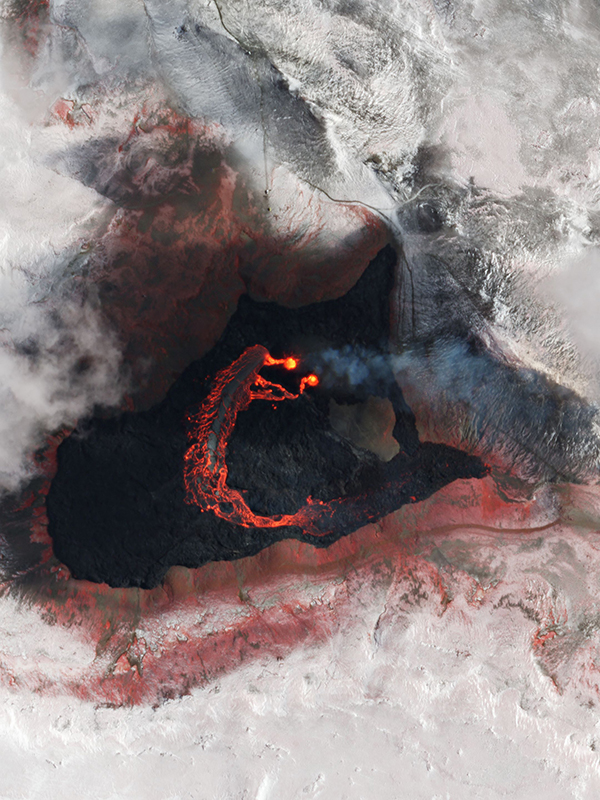 |
| SkySat • Fagradalsfjall, Iceland • March 26, 2021 |
| Unlike our flocks of Doves, our SkySats aren’t the cute size of a shoebox. They’re more like a minifridge. But that extra size helps them pack a bigger punch. SkySats have a resolution of 50 cm, meaning that each pixel of a photograph corresponds to 50 cm in physical length on the ground. That high resolution allows SkySats to pick up details like cars, small changes in the landscape, and bohemian gatherings in the Nevadan desert. |
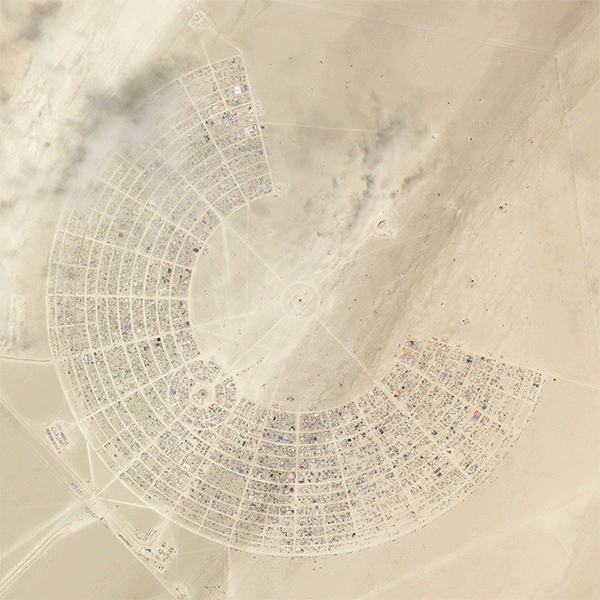 |
| SkySat • Burning Man, Black Rock City, Nevada • August 25, 2019 |
| Each SkySat image covers about 70 square km (27 square miles) in detail. Each shot is “tasked”: a Planeteer or customer orders the satellite to photograph a certain area, like this illegal gold mine spotted in Peru. |
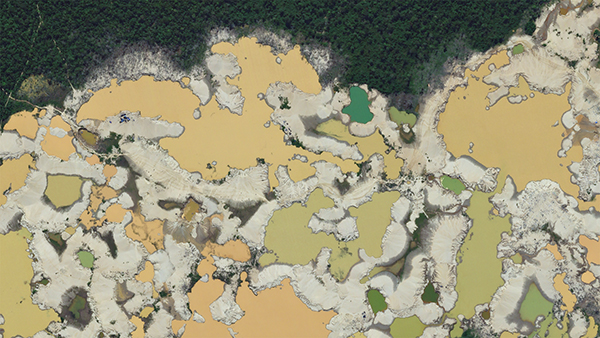 |
| SkySat • Gold mine, Peru • May 25, 2016 |
| A vast majority of the satellite images in distribution are taken from a top-down (or nadir) angle. Though useful, this perspective removes depth and makes the Earth look unnaturally flat. Take a look at Australia’s Prominent Hill Mine, which produces copper, silver, and gold—plus a mesmerizing view. From this angle there’s no way to tell that the pit is hundreds of meters deep.
|
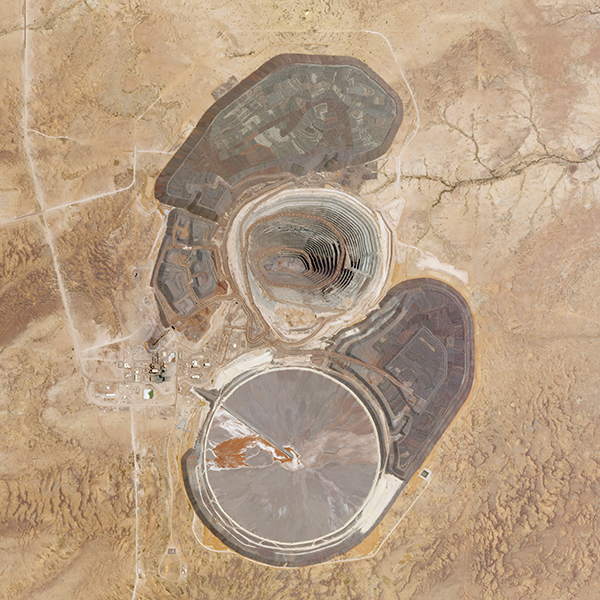 |
| SkySat • Prominent Hill Mine, Australia • November 25, 2017 |
| Part of SkySat’s bulk comes from its propulsion system, which allows each individual satellite to optimize its altitude and change the angle at which it photographs the Earth. Oblique imagery, as it's called, creates a perspective that’s more in line with how we see objects in real life. From this angle, the jagged peaks of Patagonia’s Mount Fitz Roy almost appear as if photographed from a plane. |
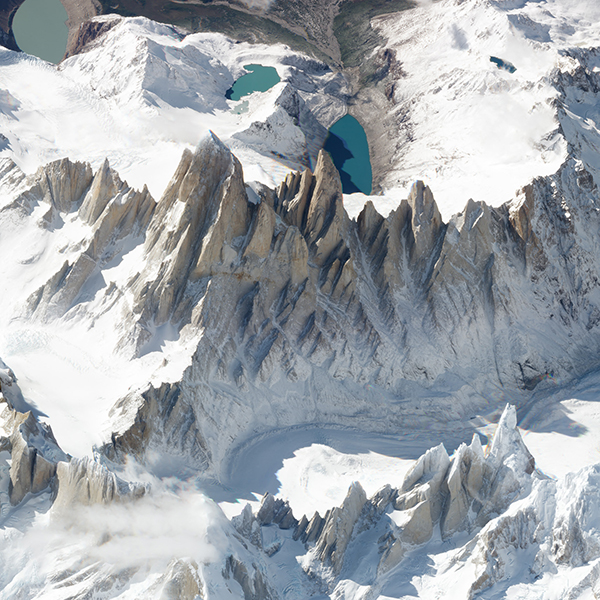 |
| SkySat • Mount Fitz Roy, Patagonia • March 19, 2018 |
| And these obliques allow us to view hidden forms of structures. The iconic Hoover Dam takes on an entirely new splendor when viewed from this perspective, with its 221 meter (725 foot) tall concrete dam and bridge clearly visible.
|
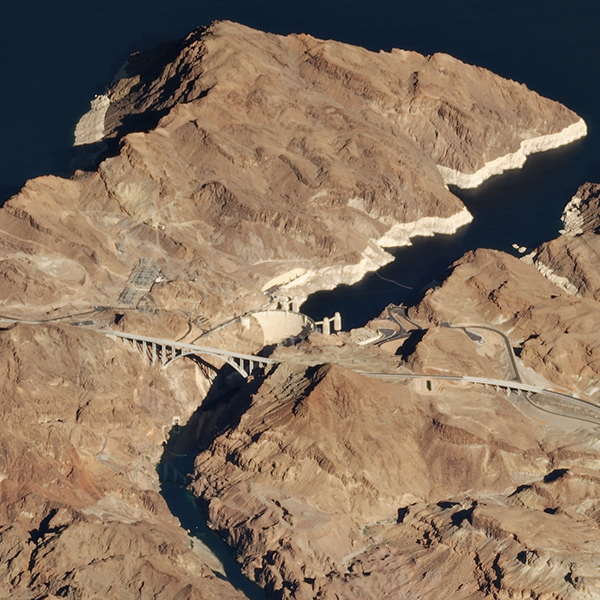 |
| SkySat • Hoover Dam, Nevada-Arizona, USA • December 12, 2018 |
|
| Obliques are particularly effective at providing vertical scale to objects that would otherwise be impossible to determine from a top-down view. Take Breidablik Peak on Canada’s Baffin Island, for example. Without the oblique perspective, and Empire State Building reference, its massive height would be far more difficult to discern. |
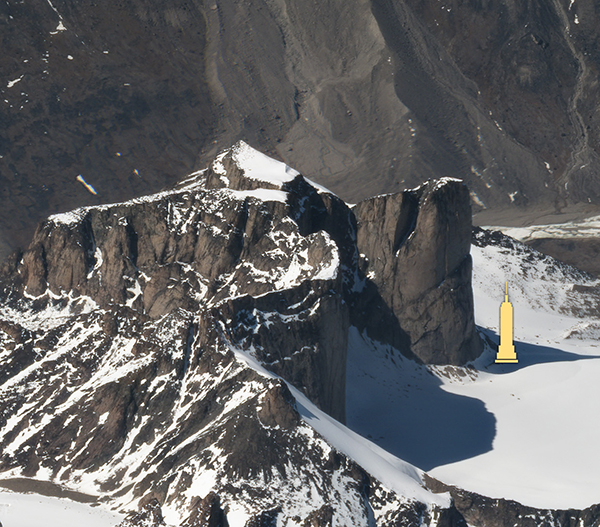 |
| SkySat • Breidablik Peak, Baffin Island, Canada • June 21, 2020 |
| Whether it’s higher resolution or a new perspective, SkySats allow us to view the physical world in fascinating ways. We’ll give some love to PlanetScope and RapidEye in future issues. But in the meantime, here’s one last SkySat image of a turquoise lithium mine to hold you over. |
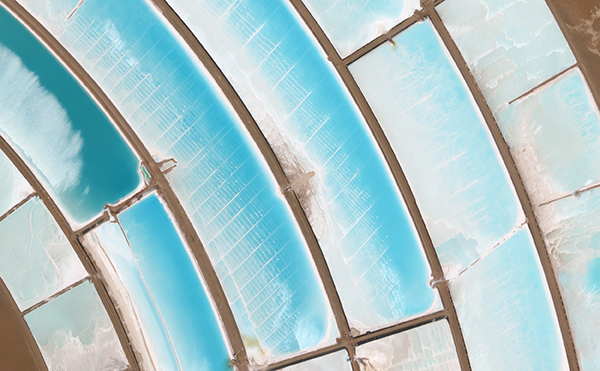 |
| SkySat • Salar de Olaroz, Argentina • November 24, 2017 |
|
|
|
Ukraine Update |
| Today marks a month since Russia invaded Ukraine. Over the past four weeks, Russian forces have bombarded multiple Ukrainian cities, millions of civilians have fled to neighboring countries, many countries have imposed strict sanctions, and thousands have lost their lives to violence. We continue to provide imagery to our partners in governments, aid and relief organizations, data analysts, and media. Here are some of the images of recent developments we’ve captured.
The Ukrainian military destroyed multiple Russian helicopters stationed at Kherson International Airport on March 15th.
|
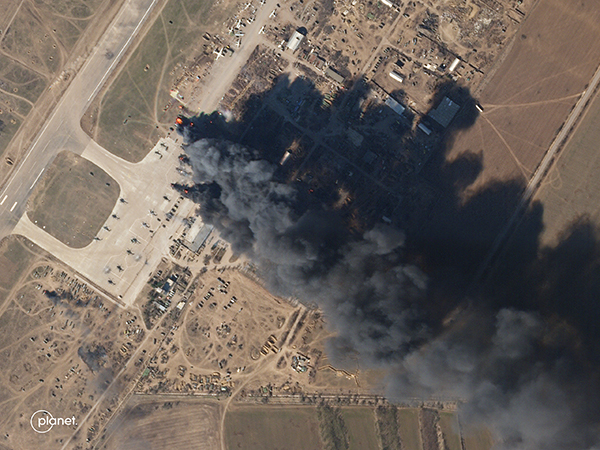 |
| SkySat • Kherson International Airport, Ukraine • March 15, 2022 |
| A number of helicopters can be seen burning in this close-up. |
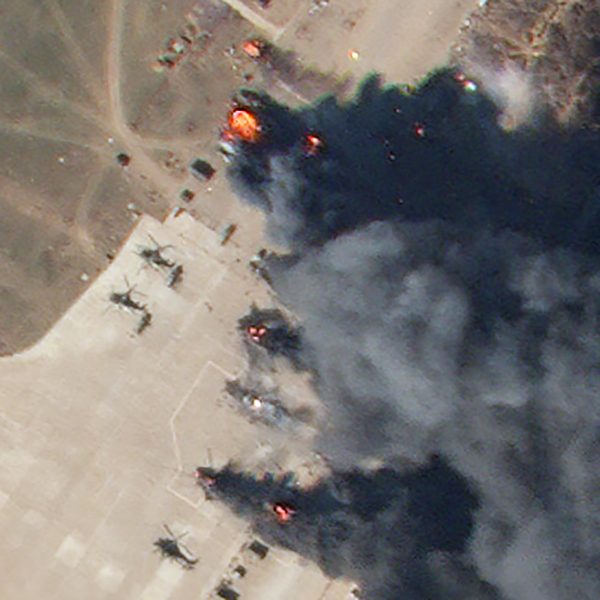 |
| SkySat • Kherson International Airport, Ukraine • March 15, 2022 |
| In early March, Ukraine flooded an area north of Kyiv, as shown in these Planet Dove comparisons. Analysts believe the flooding was an intentional tactic to stop the advance of Russian troops. |
 |
| PlanetScope • Irpin’ River, Ukraine • February 22 - 28, 2022 |
| The battle for Mariupol intensified this past week as troops began fighting within the streets of the port city. Multiple civilian buildings can be seen burning as Russia continues their siege with a barrage of bomb strikes. |
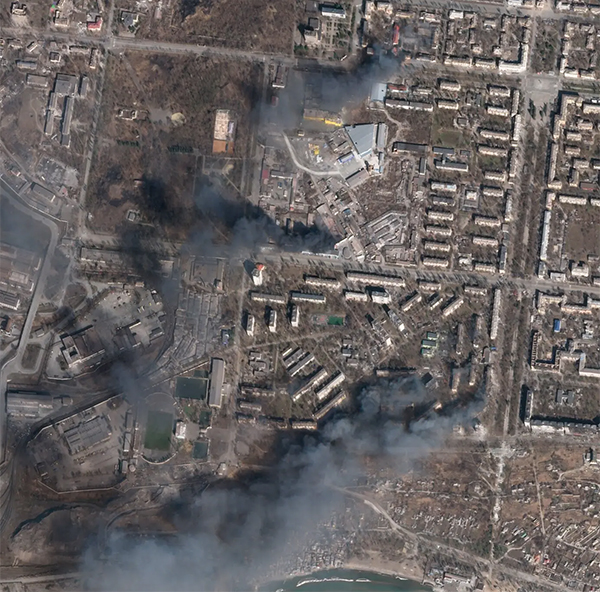 |
| SkySat • Mariupol, Ukraine • March 20, 2022 |
| While governments are denouncing Putin’s actions and imposing sanctions, civilians are gathering around the world to protest Russia’s aggression. Last Sunday, over 10,000 people attended a solidarity concert in Berlin, Germany to stand and sing in support of Ukraine. |
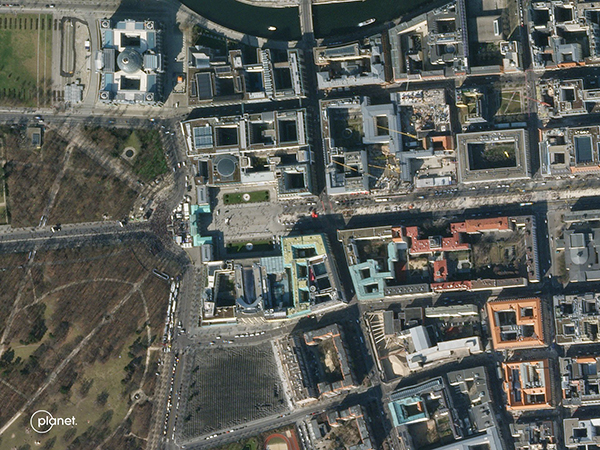 |
| SkySat • Berlin, Germany • March 20, 2022 |
|
|
|
Ever Stuck |
 |
| PlanetScope • Chesapeake Bay, Maryland • March 15, 2022 |
| A cargo ship named “Ever Forward” has been stuck in the mud for over a week now—(some headlines just write themselves). The 1,085-foot ship ran aground in the Chesapeake Bay on March 13th. And while dredging work has begun, Ever Forward is considerably lodged into the mud.
|
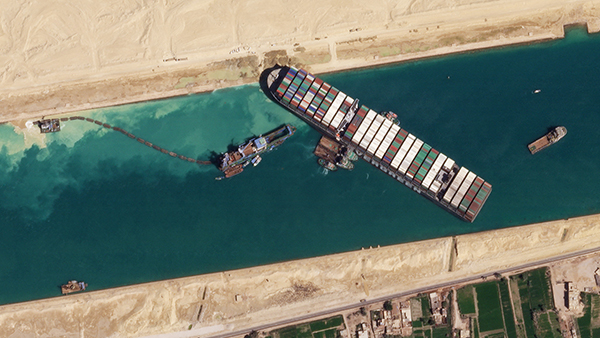 |
| SkySat • Suez Canal, Egypt • March 28, 2021 |
| The ship is owned by the same company (Evergreen Marine Corp.) that was responsible for the Suez Canal blockage debacle this time last year. Fortunately, Chesapeake Bay is far larger than the Suez Canal, so other ships can sail on by. |
|
|
|
Spring Bloom |
| It’s officially spring in the northern hemisphere: that time of the year when we turn our clocks forward, temperatures start to warm, and everyone discovers they have a seasonal allergy. It’s also when flowers blossom. And one of the more notable blooming events happens among the tulip fields in the Netherlands. Happy spring! |
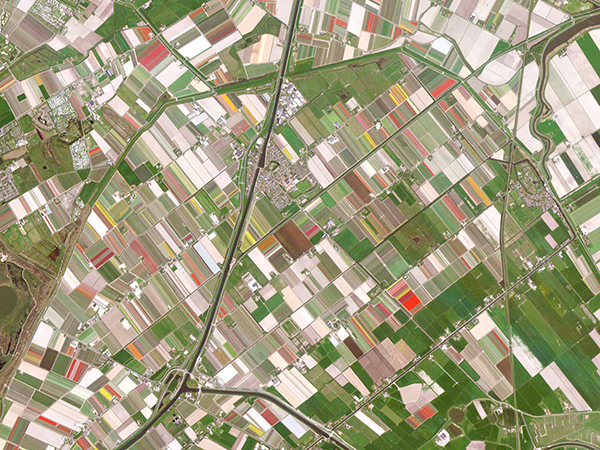 |
| RapidEye • Den Helder, Netherlands • May 6, 2016 |
|
|
|
|
|
|
|